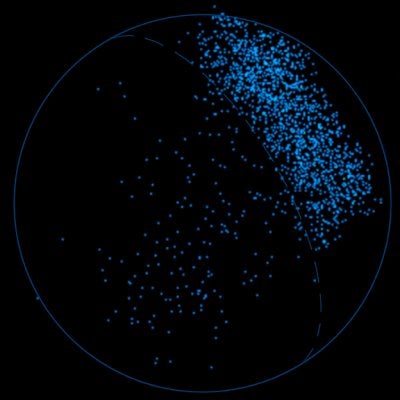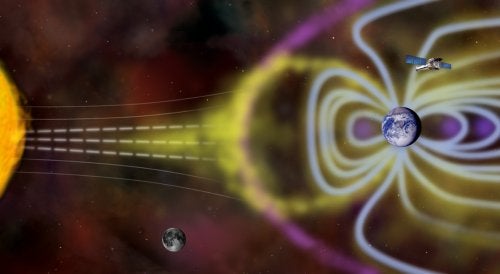We’ve sent several spacecraft there. We’ve even sent people there. But Earth’s partner in space is still in many ways mysterious. But astronomers keep trying new ways to figure out the moon and its riddles, recently by aiming the Chandra X-ray Observatory at Earth’s natural satellite. The observations reveal details about the moon’s composition and resolve a question that has been puzzling scientists for over a decade.
In July and September of 2001, a team led by Jeremy Drake of the Harvard-Smithsonian Center for Astrophysics used Chandra to study x rays from the moon. These x rays are produced when the solar wind strikes the lunar surface and causes it to fluoresce. The solar wind knocks electrons from atoms on the moon, and when other electrons fall into place, they give off their excess energy in the form of x rays. As a result, the x-ray spectra lists what the surface is made of.
“We have moon samples from the six widely-spaced Apollo landing sites, but remote sensing with Chandra can cover a much wider area,” explains Drake. “It’s the next best thing to being there, and it’s very fast and cost-effective.”
The results showed oxygen, silicon, magnesium, and aluminum all over the lunar surface. It also revealed compositional differences between the mare and highland regions. Drake’s team hopes to compare the abundance of the moon’s materials to those in Earth’s mantle to test the likelihood that the moon formed from material that was blasted off our planet by a giant impact billions of years ago.
Chandra’s saw these strange x rays, too, but the new data reveal that they have a different profile than the x rays from the bright part of the moon — suggesting the dark-side x rays aren’t from the moon at all.
Instead, Brad Wargelin of the Harvard-Smithsonian Center for Astrophysics and his colleagues believe the radiation is from atoms in the outer part of Earth’s atmosphere, tens of thousands of miles from the ground, that are struck by the solar wind. In a similar fashion, solar wind particles that strike a comet cause atoms in its coma to emit x rays.
“The observed x-ray spectrum, the intensity of the x rays, and the variation of the x-ray intensity with time can all be explained by emission from Earth’s extended outer atmosphere, through which Chandra is moving.” Wargelin states.
“This idea has been kicking around among a small circle of believers for several years, supported by theory and a few pieces of evidence,” Wargelin adds. “These new results should really clinch it.”











